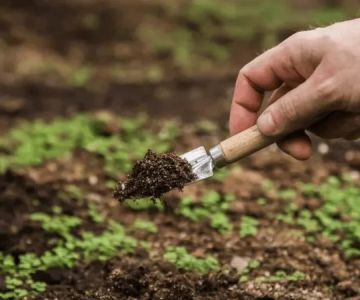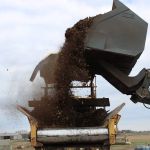
Tips for Maintaining a Lawn in a Hot, Dry Summer
- 1. Understanding the Challenges of a Hot, Dry Summer
- 2. Proper Watering Techniques for a Healthy Lawn
- 3. Lawn Care Tips for Hot, Dry Conditions
- 4. Fertilization and Mulching for Lawn Health
- 5. Preventing Damage and Maintaining a Green Lawn
1. Understanding the Challenges of a Hot, Dry Summer
Summer heat can be both a blessing and a curse for your lawn. While your grass may seem to thrive during the warmer months, hot and dry conditions can quickly lead to drought stress. Understanding the impact of extreme heat and lack of water is the first step toward maintaining a healthy lawn. During a hot, dry summer, lawns are often at risk for wilting, browning, and in extreme cases, dying.
The primary challenge in hot, dry weather is the lack of consistent rainfall combined with high evaporation rates. Grass struggles to absorb the moisture it needs, and if not cared for properly, it may become stressed and vulnerable to pests and diseases.
2. Proper Watering Techniques for a Healthy Lawn
Watering your lawn correctly during the hot summer months is crucial to keeping it green and healthy. Here are some watering tips to help you manage your lawn effectively:
- Water deeply, but infrequently: It's better to water your lawn deeply once or twice a week rather than giving it shallow, frequent watering. This encourages deep root growth, which helps your grass survive dry conditions.
- Water early in the morning: The best time to water is early in the morning, ideally before 10 a.m. This reduces water loss due to evaporation and gives your lawn time to dry before evening, preventing disease.
- Avoid overwatering: Overwatering can be just as harmful as underwatering. It can lead to root rot and promote weed growth. Aim for around 1 to 1.5 inches of water per week, including rainfall.
Following these watering practices will help your lawn retain moisture, develop deep roots, and stay lush during the hot, dry summer months.
3. Lawn Care Tips for Hot, Dry Conditions
Maintaining a lawn during a hot, dry summer requires a proactive approach. Here are additional care tips to keep your grass healthy:
- Raise your mower height: During the summer, set your mower blade higher than usual. Longer grass helps shade the soil, keeping it cooler and reducing moisture loss.
- Avoid heavy foot traffic: Lawns that are already stressed by heat and dry conditions should be avoided as much as possible. Limiting foot traffic will help prevent further damage to your lawn.
- Leave grass clippings: Instead of bagging your clippings, leave them on the lawn. Grass clippings act as mulch, helping to retain moisture and add nutrients back into the soil.
By implementing these lawn care strategies, you’ll be helping your grass survive and thrive during challenging weather conditions.
4. Fertilization and Mulching for Lawn Health
Proper fertilization and mulching are essential for maintaining a healthy lawn during the summer heat:
- Fertilize wisely: Applying fertilizer during the hot months can encourage excessive growth, which can stress your lawn further. Instead, fertilize in early spring and fall, when your lawn is actively growing.
- Use mulch to conserve moisture: Adding mulch around the base of trees and garden beds helps retain soil moisture and keeps the temperature regulated. You can also use mulch to protect grass from extreme heat.
Fertilization and mulching should be done carefully to avoid overfeeding your lawn. By giving your grass what it needs without overwhelming it, you’ll ensure it stays strong and resilient throughout the summer.
5. Preventing Damage and Maintaining a Green Lawn
Taking proactive steps to prevent damage is the key to maintaining a lush, green lawn during a hot, dry summer. Here are some strategies to help preserve your lawn:
- Reseed during the right time: If your lawn is showing signs of thinning, consider reseeding in late summer or early fall when temperatures are cooler. This gives new grass time to establish before the next heatwave.
- Control pests and diseases: Hot, dry conditions can make your lawn more susceptible to pests and diseases. Keep an eye on the condition of your grass and apply pesticides or fungicides as necessary.
- Use drought-tolerant grass varieties: If you live in an area with prolonged hot, dry summers, consider switching to drought-tolerant grass varieties such as Bermuda or Zoysia. These grasses require less water and are more resilient in harsh conditions.
By implementing these preventive measures, you can help keep your lawn healthy and green throughout the summer, even during the most challenging weather conditions.
For more tips and to find the best products for lawn care, visit Beautiful Landscapes, where we offer a wide range of tools and resources to help you maintain a beautiful lawn year-round.







 4 Seasons Landscaping Plus4.0 (23 reviews)
4 Seasons Landscaping Plus4.0 (23 reviews) Green View4.0 (10 reviews)
Green View4.0 (10 reviews) Tunzi & Sons Landscaping4.0 (49 reviews)
Tunzi & Sons Landscaping4.0 (49 reviews) JBH Lawn & Landscaping4.0 (9 reviews)
JBH Lawn & Landscaping4.0 (9 reviews) Bill's Property Maintenance LLC5.0 (2 reviews)
Bill's Property Maintenance LLC5.0 (2 reviews) Oak Bros TreeCycle5.0 (49 reviews)
Oak Bros TreeCycle5.0 (49 reviews) How to Design a Courtyard With Water-Wise Plants
How to Design a Courtyard With Water-Wise Plants How to Design With Movement: Plants That Sway Gracefully in Your Garden
How to Design With Movement: Plants That Sway Gracefully in Your Garden How to Develop a Seasonal Garden Maintenance Calendar - Expert Tips for Year-Round Gardening
How to Develop a Seasonal Garden Maintenance Calendar - Expert Tips for Year-Round Gardening How to Build a Pathway That Blends With Nature: A Step-by-Step Guide
How to Build a Pathway That Blends With Nature: A Step-by-Step Guide How to Build a Wildlife Habitat Garden That Supports Biodiversity
How to Build a Wildlife Habitat Garden That Supports Biodiversity How to Protect Plants From Frost & Freeze Damage - Essential Tips for Gardeners
How to Protect Plants From Frost & Freeze Damage - Essential Tips for Gardeners